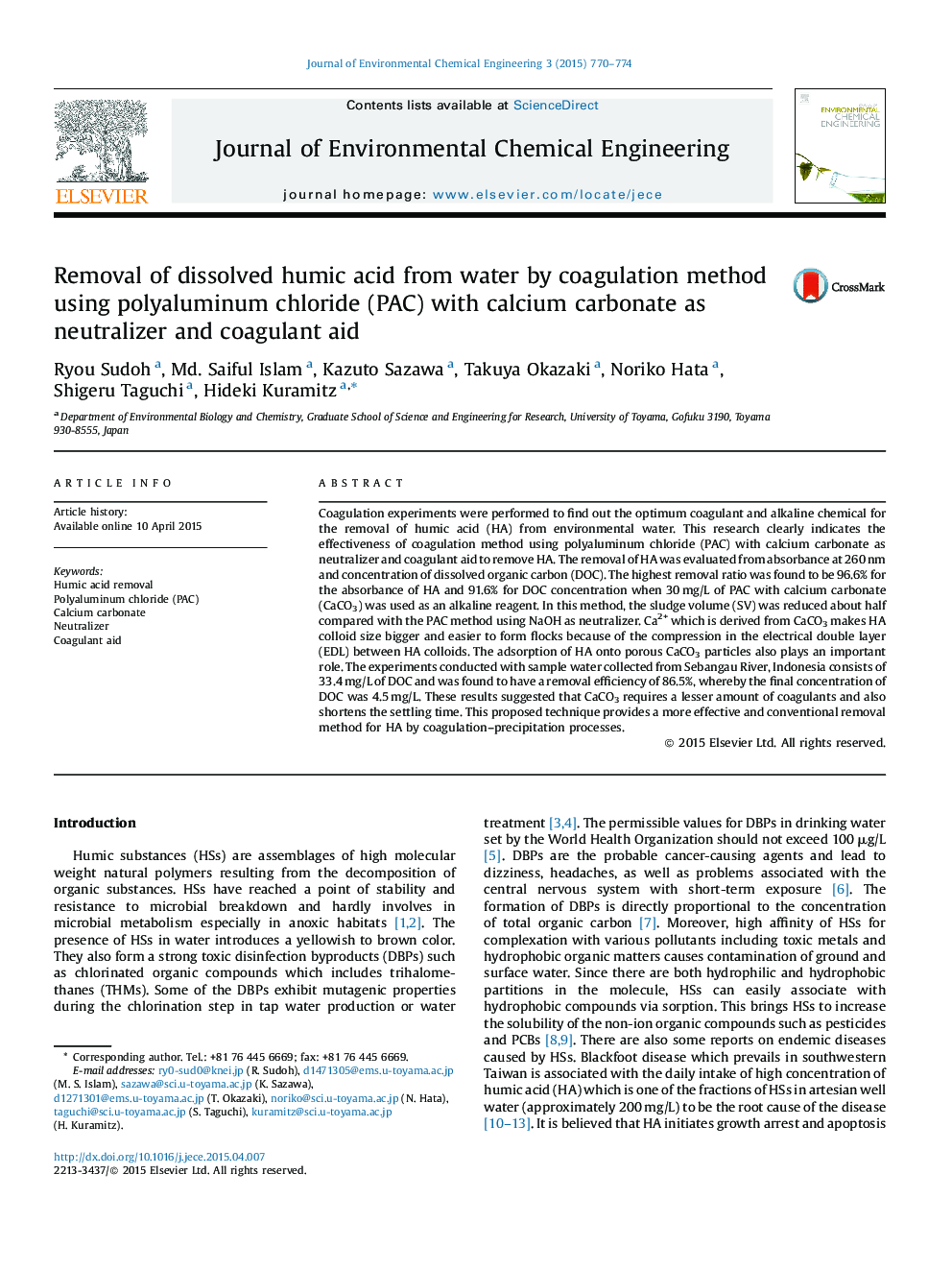| کد مقاله | کد نشریه | سال انتشار | مقاله انگلیسی | نسخه تمام متن |
|---|---|---|---|---|
| 222300 | 464274 | 2015 | 5 صفحه PDF | دانلود رایگان |

• Humic acid (HA) initiate growth arrest and apoptosis in fibroblasts.
• Positively charged HA make coagulation hard due to positively charged coagulants.
• We investigated HA removal using PAC with CaCO3 as neutralizer and coagulant aid.
• CaCO3 saves the usage of coagulants and settling time.
• We found that PAC is an effective coagulant for the removal of HA when using CaCO3.
Coagulation experiments were performed to find out the optimum coagulant and alkaline chemical for the removal of humic acid (HA) from environmental water. This research clearly indicates the effectiveness of coagulation method using polyaluminum chloride (PAC) with calcium carbonate as neutralizer and coagulant aid to remove HA. The removal of HA was evaluated from absorbance at 260 nm and concentration of dissolved organic carbon (DOC). The highest removal ratio was found to be 96.6% for the absorbance of HA and 91.6% for DOC concentration when 30 mg/L of PAC with calcium carbonate (CaCO3) was used as an alkaline reagent. In this method, the sludge volume (SV) was reduced about half compared with the PAC method using NaOH as neutralizer. Ca2+ which is derived from CaCO3 makes HA colloid size bigger and easier to form flocks because of the compression in the electrical double layer (EDL) between HA colloids. The adsorption of HA onto porous CaCO3 particles also plays an important role. The experiments conducted with sample water collected from Sebangau River, Indonesia consists of 33.4 mg/L of DOC and was found to have a removal efficiency of 86.5%, whereby the final concentration of DOC was 4.5 mg/L. These results suggested that CaCO3 requires a lesser amount of coagulants and also shortens the settling time. This proposed technique provides a more effective and conventional removal method for HA by coagulation–precipitation processes.
Journal: Journal of Environmental Chemical Engineering - Volume 3, Issue 2, June 2015, Pages 770–774